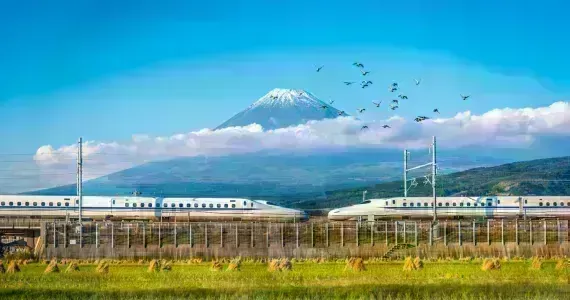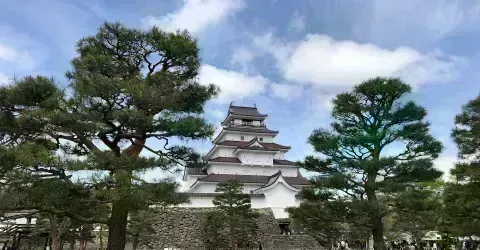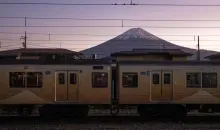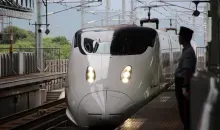How to Make the Most Out of the Japan Rail Pass
Many visitors enjoy traveling by rail in Japan: The network is broad, the trains are roomy and comfortable, and they are always on time! However, train travel in Japan can get quite pricey. The Japan Rail Pass is a great solution to save some money on your trip to Japan, especially if you use it right. Find out in this article how you can get the most out of the Japan Rail Pass!
Why get a Japan Rail Pass?
Traveling by train for your trip to Japan generally can get expensive, but a Japan Rail Pass can save you a lot of money. But the JR Pass does much more than merely help with savings; it also makes travel much easier. How? With this special ticket, you have access to almost the entirety of the Japan Railway Network of Shinkansen bullet trains, local trains, buses, and even some ferries, with a one-price single ticket and without the need for any seat reservations. Although, seat reservations can be easily done at no extra cost with the pass if necessary.
These benefits, along with an unbeatable flexibility, have made the Japan Rail Pass a popular and lucrative option for those planning a trip to Japan since its inception in 1981. JR Passes are offered to non-Japanese residents for 7, 14, or 21 consecutive days, and there are Ordinary and Green (first class) train car options. Find more information about the prices below (and read more to find out how to make the JR Pass profitable and make the most out of it):
| JR Pass Type | Ordinary Pass Price | Green Pass Price |
|---|---|---|
| 7-day | 50,000 yen | 70,000 yen |
| 14-day | 80,000 yen | 111,000 yen |
| 21-day | 100,000 yen | 140,000 yen |
Tips for making the most out of the Japan Rail Pass
The JR Pass relies on three key benefits:
- Flexibility
- Wide coverage
- Ease of use
To make the most out of the Japan Rail Pass, you have to consider those three aspects, and include them in your travel preparation, as visitors to Japan have been doing for the last 40 years. New conditions* also now add some advantages, such as access to the previously prohibited and much faster Nozomi and Mizuho Shinkansen trains. First, let's take a look at some itineraries that'll help you discover Japan in-depth, as well as easily offset the price of a JR Pass. Even when going through the classic and straightforward "Golden Route", take advantage of the Japan Rail Pass' huge coverage !
*On October 1st, 2023, new Japan Rail Pass conditions went into effect, most notably regarding purchasing options and eligibility requirements. Please read more below.
Total Travel Time: ~9 Days
Price w/o JR Pass: ¥59,000+
7-Day JR Pass Price: ¥50,000
As previously mentioned, this itinerary uses the Japan Rail Pass to traverse a staple route for first-time travelers to Japan, the so-called "Golden Route." Some of the most iconic cities and their sites are possible to visit via train with this itinerary. Typically, Golden Route travelers focus on starting at the modern, metropolitan capital of Tokyo, continuing to the ancient capital of Kyoto, and then finishing the journey at the historic port city of Hiroshima, before heading back to Tokyo.
This journey is covered, and more, with the Japan Rail Pass. To generate more value for your trip, come back with even more memories and add a unique, off-the-beaten-path feel to your travels, we suggest adding other accessible cities like the lively Osaka in Kansai, near Kyoto, and the elegant Kanazawa in Ishikawa Prefecture, an easy day trip directly from Kansai via the Thunderbird train. (Though the Thunderbird train will be replaced with a Shinkansen bullet train extension as of 2024).
Total Travel Time: ~16 Days
Price w/o JR Pass: ¥93,590+
14-Day JR Pass Price: ¥80,000
Adding another seven days to your Japan Rail Pass usage period allows visitors to Japan to travel using the Golden Route as a basis, but allows for a more leisurely time at each destination plus the time to travel past Hiroshima into Kyushu, the most southern island of mainland Japan.
With this itinerary, it may be best to first go through the three essential destinations of the Golden Route (Tokyo, Kyoto, and Hiroshima), and then keep heading south into Kyushu. Here, the journey from the largest city on the island, Fukuoka, out to the naturally and culturally rich Kumamoto, then down to the coasts of Kagoshima.
From here, Japan Rail Pass users will be able to loop back up via the trains in the area and head back up to Kansai to visit Osaka, then to Kanazawa. Before heading back to Tokyo for departure from either Haneda or Narita, a stop in the inland prefecture of Nagano will be a great way to see the Japanese Alps and the host city for the 1998 Winter Olympics. With this many cities and destinations, the 80,000 yen listing of the 14-day pass after the price update is easily met.
Total Travel Time: ~24 Days
Price w/o JR Pass: ¥180,000
21-Day JR Pass Price: ¥100,000
21 whole days of unlimited rides on trains throughout Japan with the pass gives a lot of time to explore the country, and, in fact, to get the most out of your trip and the most value out of the 21-day Japan Rail Pass, we suggest trying to traverse the archipelago by train from top to bottom! Instead of flying into the capital city of Tokyo like the previous two itineraries, if possible, we suggest flying into Sapporo via Shin-Hakodate Airport, starting in the less-visited North prefectures.
Immediately activating the Japan Rail Pass allows pass users to get right into the city, explore Hokkaido, and then travel downwards into Tohoku. The vastness and variety of attractions and cities in Tohoku, along with the well-connected network of trains, means destinations can be mixed and matched, but Morioka in Iwate Prefecture and Sendai in Miyagi Prefecture are safe bets for sure. Upon arriving in Tokyo, take the chance to travel around the central part of Japan and the Japanese Alps through destinations like Nagano, Gifu, Toyama, and/or Ishikawa. Then, you can make your way down South into the more usual itinerary to Kyoto & Hiroshima, and some more with an exploration of the Kyushu island.
The Japan Rail Pass, the easy-to-use and flexible travel solution
The above itineraries, and all the different trips needed to get from one step of the route to the next, are all covered in one single ticket. No need to figure out which train lines and which associated train fare to book, at which machine in which station, and then carry individual train tickets. With the JR Pass, all your travels for 7, 14 or 21 days are included in one single paper ticket. Just insert it at the station gates upon arriving, as well as exiting at your destination. That's it. An undeniable benefit to ensure peace of mind on your train trips in Japan, whether you're traveling alone or with multiple people under your responsibility.
The JR Pass also allows you to ride on any train on a JR line, without booking in advance. Unsure of the time you'll be departing? Missed your train? Feel like going on a day trip on a whim? Just get to your needed station, enter with your JR Pass, and get in the right train. And for those who like to plan ahead, no worries: your Japan Rail Pass also allows you to book a seat in your train of choice in advance, free of charge. When purchasing individual train tickets in Japan, the option to add a seat reservation to your booking is also available, but comes at an extra fee.






Not to mention all the extra benefits of the Japan Rail Pass! Indeed, JR Pass holders are not limited strictly to high-speed rail with the Shinkansen bullet train. Within many towns and major cities, a majority of the express, limited, and local railways are operated by JR. Many buses and even some ferry rides, such as the one from Hiroshima to Miyajima, are operated by JR as well. The access granted for visitors on the more local scale is something that should not be overlooked when considering the value of this option : the cost of these small trips add up considerably.
Some airport transfers are also one of the many public transportation services that come with your JR Pass. Make sure to budget every single journey you plan to ride on your Japan trip: indeed, while the new Japan Rail Pass may seem more expensive at first, if you account for the daily subway, bus or local train rides you would buy individually, the JR Pass might just still be the most cost-efficient solution.
Choose the right activation date to make the most out of your JR Pass
To maximize the value of your pass, thoroughly research the places you want to visit and plan your route accordingly. Indeed, a Japan Rail Pass can be activated up to 1 month upon its exchange in Japan*, meaning you don't necessarily have to exchange and activate it directly when arriving at the airport.
However, for those arriving in Tokyo, and having a short trip revolving around the city, we recommend activating your JR Pass immediately for airport transfers and onwards, and use the JR network as much as possible. In Tokyo and Kyoto, opt for the above-ground train system, which is run by JR, instead of the subway, which is not. Using the JR lines as much as you can will help you make the most out of the Japan Rail Pass, and avoid you costly individual tickets on private lines outside the JR network. For those with a short itinerary, activating it immediately upon exchanging your JR voucher at the airport means saving money instantly on your first trip, the airport transfer to the city.
Book your Japan Rail Pass today!
If your itinerary brings you further South or North in Japan, where you will travel for longer distances or for longer stretches of time, we recommend waiting a bit before exchanging and activating your JR Pass. On top of beating the JR airport ticket office crowds by exchanging your pass at a station in the city, you'll be able to use only a 7-day pass or a 14-day pass even in a longer trip, by activating the JR Pass right at your first long-distance Shinkansen bullet train ride. For your public transportation needs in the city before activating your JR Pass, you can rely on prepaid cards or day passes, such as the Tokyo Subway Pass or the Kyoto Bus Pass.
*Bonus tip: you can purchase your JR Pass up to 3 months before its exchange date in Japan. Keep track of the exchange rate between the yen and your country's currency, as you maybe can save some money by buying your JR Pass at a time when the exchange rate benefits your currency more than the yen.
Our public transportation day-pass options in Japan!
Consider adding day trips to your itinerary to make the most out of the JR Pass
Even if you are only going to Tokyo, you can take many day trips that will show you other faces of Japan, without changing any of your accommodation plans, thanks to the Japan Rail Pass. From Kyoto, Hiroshima, Fukuoka, Nagoya, Sapporo, or any of the main cities your itinerary might take you to, it is possible to venture out into the Japanese countryside or to smaller - but culturally rich - cities and villages, for a day, half a day, or even a couple of hours !
From Tokyo, you can explore the beach towns of Chiba Prefecture, or get a refreshing natural outing in the Japanese Alps in Nagano or in the sublime landscapes of Nikko. From Kyoto, you almost have to get to Nara. But you can also head up to Biwa Lake, or to the fishing villages along Wakasa Bay. From Fukuoka, the world-famous onsen town of Beppu is just a train hop away. From historic Kanazawa, which is already a great day trip in itself, you can head out to Shirakawago, a UNESCO World Heritage mountain village.
More 7-Day itinerary ideas with your JR Pass
From the Kansai region, a trip to the historic Kanazawa in Ishikawa Prefecture can be done via the Thunderbird Rapid Train line, which is also fully covered. A one-way trip via this train is around 8,250 JPY for a reserved seat.
Exploration of Kanazawa can be a great day trip or overnight adventure (or longer, of course), and from here, exploring the rest of Hokuriku via way of Toyama (a rural prefecture famous for some of the country's best seafood) can be made. This would typically go for around 4,140 JPY. And from here, pass-holders can go to make a trip to Nagano Prefecture, which would typically cost 9,190 JPY with a reserved seat.
Nagano is one of the most geographically large prefectures in Japan, and boasts beautiful mountain scenery and a capital city that hosted the Olympics in 1998. From Nagano, the trip back to Tokyo can be made to explore the city and tie up any loose-ends. This Shinkansen ride comes to around 9,710 JPY, and any JR transit within Tokyo are all covered.
The transit between the major destinations in this itinerary equate to a little over 61,000 JPY, without incorporation of local transit and transfer from the airport. But in addition to the savings made, the flexibility and ease of use with the JR Pass is a big bonus that should not be overlooked.
Regional Pass : An alternative to the Japan Rail Pass
While the National Japan Rail Pass can still serve as an excellent deal for travelers with an array of destinations on their to-go list, an alternative for some who wish to concentrate primarily on specific regions in Japan is that of the regional passes.
Regional passes operate similarly to the national version, but focus on a specific area of travel. There are an array of options for different regions of Japan to choose from, including the aforemntioned Kansai Region, the southern area of Kyushu, the most northern island of Hokkaido, other parts of Honshu, like Hokuriku and Tohoku, and many more. The Kansai Wide Area Pass that allows access throughout this region via train, bus, and even ferry, goes for only 75 USD for 5 days. Also consider the Kansai Thru Pass if you are staying in the region for 3 days, at 42 USD.
For seasoned travelers who wish to take a deeper dive into their favorite regions of Japan, this poses as an excellent deal and more affordable alternative to the national Japan Rail Pass even at the current, more affordable listing. Many of these also include access to Shinkansen bullet train lines etween certain stops within the specific region, meaning there is very little compromise in terms of speed and accessibility.
What are some Regional Passes to look into?
With this option under the radar of many who may not be able to utilize the National JR Pass to its full potential, many ask which regional options may be best for them. We've compiled a few itineraries for potential tourists to look into.
The most popular options are that of the Hakone Free Pass, Kansai Wide Area, Hokkaido, Shikoku, and Kyushu Passes.
Any of these would be great options, however we highly suggest options that incorporate Shinkansen lines, as access to these contributes to greater deals and savings since the bullet train is the most costly railway option in Japan.
Discover More of Japan with Our JR Regional Passes
The perfect alternative to Japan Rail Pass for exploring local treasures!
Frequently Asked Questions about the JR Pass.
Can't find the answer you were looking for?
If you haven't found the answer you're looking for, please check our FAQ page for more information about the Japan Rail Pass.
We're also here to help and would be more than happy to assist you. Simply click our " Contact us" page and email us your inquiry.
One of our customer support representatives will get back to you as soon as possible.







































